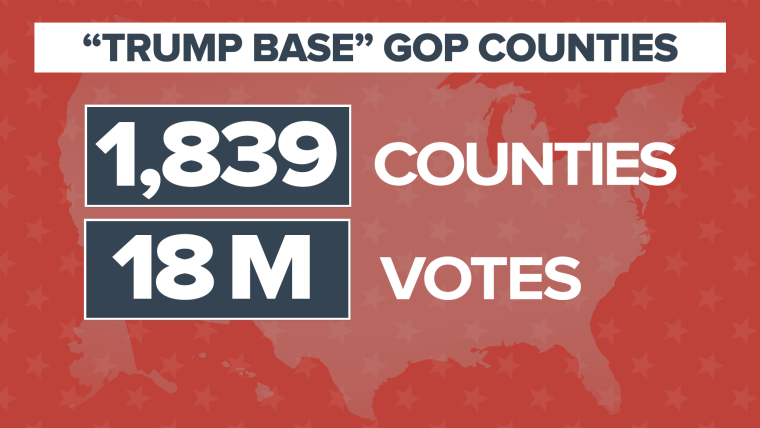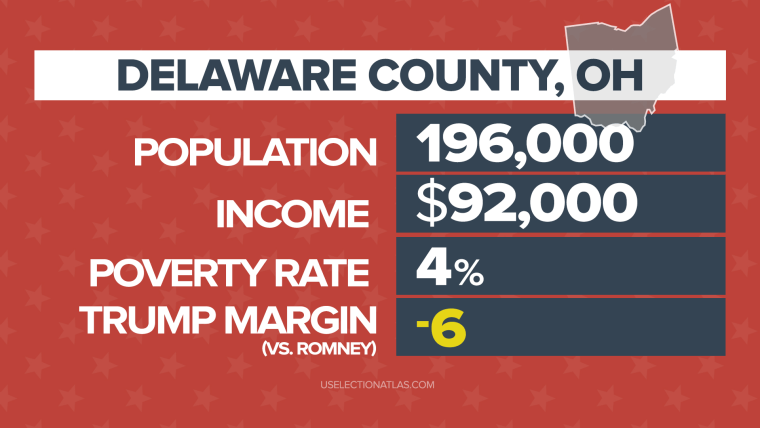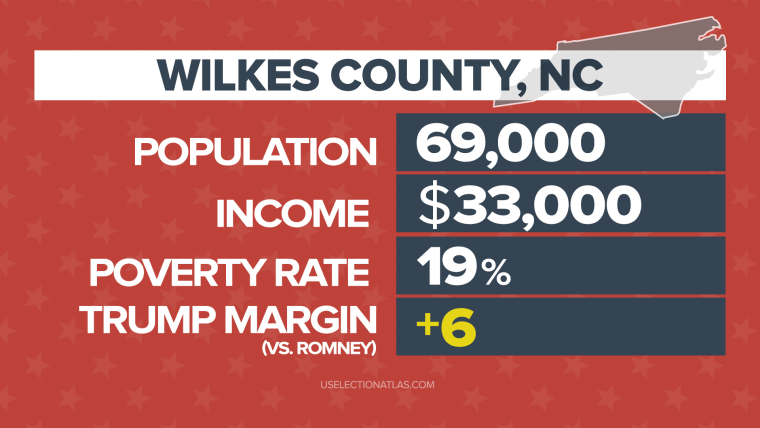The Republican political feud in Washington often appears to be a battle of egos and personalities, but the voter data from beyond the Beltway show a deeper schism in the party. Something we saw up close on a trip to two deeply red Republican counties.
Comparing election numbers from the 2016 and the 2012 presidential races gives a sense of the size and the contours of two main factions in the GOP, the Trump base and the establishment-leaning wing of the party – and the big winner may be the man in the White House.
In 2016, President Donald Trump didn’t just win the election did at least 2 percentage points better than Republican Mitt Romney did in 2012 in some 1,839 counties. Those Trump base counties produced about 18.3 million Republican presidential votes.

But enthusiasm for Trump was hardly uniform, even among places that had a track record of voting Republican.
In 2016, there were 218 counties where Trump won but did at least 2 points worse than Romney and another 17 that flipped Democrat. Those 235 establishment leaning counties produced about 11 million Republican presidential votes.
Those numbers show a few things. First, the GOP’s establishment territory is much more urban than the Trump base. Second, and more important, the Trump base territory actually produced more votes in 2016.
Related: Two Counties, Two Camps on the Front Lines of the GOP's Civil War
In other words, the Republican establishment may ostensibly exert control over the GOP in Washington, but outside of DC, the advantage in the Republican Civil War seems like it belongs to small, scattered counties that make up the Trump base.
Those are the elements of the party that Steve Bannon, the executive chairman of Breitbart News, has actively engaged with since he left his job as a White House adviser. He did it when he endorsed conservative Roy Moore in the Alabama Senate race and when he literally declared war against the Republican establishment at the Values Voter Summit in Washington, DC.
But even before Bannon’s crusade, the 2016 election results show that there was already real movement underway within the party. Beyond the votes from the two sets of counties, look at Trump’s overall margins in them compared to Romney in 2012.
Trump won 64 percent of the vote from his base counties in 2016, Romney only won 58 percent from them in the 2012 election. At the same time, Trump won only 53 percent of the vote from the establishment counties in 2016, while Romney won 60 percent of their vote in 2012.
And the current fight between these two sides of the party is about very real differences. The people in them live in different worlds.
Consider two counties: The Trump base bastion of Wilkes County, North Carolina, where Trump grew the GOP advantage in 2016, and establishmentarian Delaware County Ohio, where the Republican edge slipped last November.

Those numbers show two very different sides of the GOP: One of cosmopolitan, economic winners; and one marked by a rural environment and harder economic times.
Those groups are going to want different things out of Washington and when we recently visited those two counties the differences were very much on display. In Wilkes County in particular, the talk was of the need to “blow up” the GOP and replace it with something else.

The question, of course, is what would a new GOP look like? That’s exactly what the party is trying to figure out now.
Inside Washington, the party’s establishment wing may still have a grip on some of the reigns of power, but the 2016 results show that outside of DC, the Trump base part of the party is potent and it’s growing as a force.